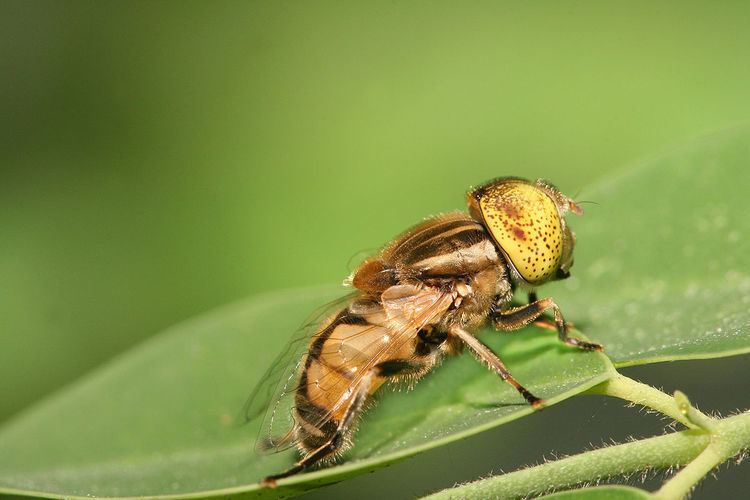Higher classification Eristalinus Order Fly | Family Syrphidae Subgenus Eristalodes Rank Species | |
 | ||
Similar Eristalinus, Hoverfly, Fly, Eristalinus aeneus, Insect | ||
Eristalinus megacephalus is a species of hoverfly.
Contents
Description
Eristalinus megacephalus has a black abdomen and golden horizonal stripes larger in males. It has a black thorax, legs with black tips, transparent, flexible wings, a large head and golden compound eyes with pale purple spots. Being about 8–11 mm long, it is a good pollinator, and uses Batesian mimicry to look like hymenopteran bees and scare away predators. Its appearance is also similar to bee flies (family Bombyliidae). The species is listed in 2: 63 of Rossi's publication Mantissa insectorum. There are no subspecies. It is the rarest species of the genus Eristalinus, and is common but not abundant.
The species's flight period is from May to October, and is most plentiful from June to July.
Distribution
E. megacephalus can be found in most countries, including South Africa, Egypt, Sri Lanka, China, Taiwan, India, Java, Guam, Southern Spain, Turkey, North Africa, Iran, and coastal parts of Italy.
Etymology
The word megacephalus consists of the prefix mega- and the suffix -cephalus. -Cephalus, derived from New Latin, means an unusual condition of the head. Mega- , a metric system prefix describing one million (1,000,000) of the base word, is used to emphasize the largeness or greatness of an object. The prefix is derived from Greek megas, which means huge and powerful.
